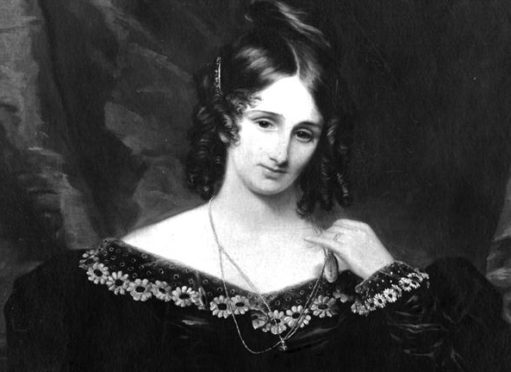Miranda Seymour’s masterful biography of Frankenstein author Mary Shelley suggests that Dundee’s whaling trade gave Mary Godwin, as she was then, the inspiration for her scary novel.
William Godwin of London had sent the sickly 14-year-old to stay with the Baxters of Broughty Ferry – of the linen dynasty.
Mary remained in Dundee for much of 1812-14, enjoying the company of William Baxter’s brood of artistic-leaning daughters .
Among other leisurely pursuits, she watched the comings and goings of whaling ships on the estuary.
Seymour noted: “The story which encloses the tale of Victor Frankenstein and his scientific experiment is of an ambitious young man who sets off to find a new land beyond the North Pole, following the route taken by whaling vessels.”
Story shaped in Dundee
Mary Shelley herself recalled in her preface to the 1831 edition of Frankenstein that the days in the comfortable house overlooking the Firth of Tay were: “The eyry of freedom, and the pleasant region where I could commune with the creatures of my fancy [and where] my true compositions, the airy flights of my imagination, were born and fostered.”
It does, therefore, seem that her remarkable masterpiece of gothic horror was partially shaped during her stay in Dundee.
Christie’s New York on September 14 sold a very rare three-volume copy of Frankenstein, uncut and in its original binding boards.
This first edition was published anonymously on 1 January 1818 in a run of just 500 copies. Now exceptionally rare, this was the only set to appear at auction since 1985.
Estimated to sell for $200,000-$300,000, the hammer fell at a heart-thumping $1.17 million, a new world record for any printed work by a woman.


